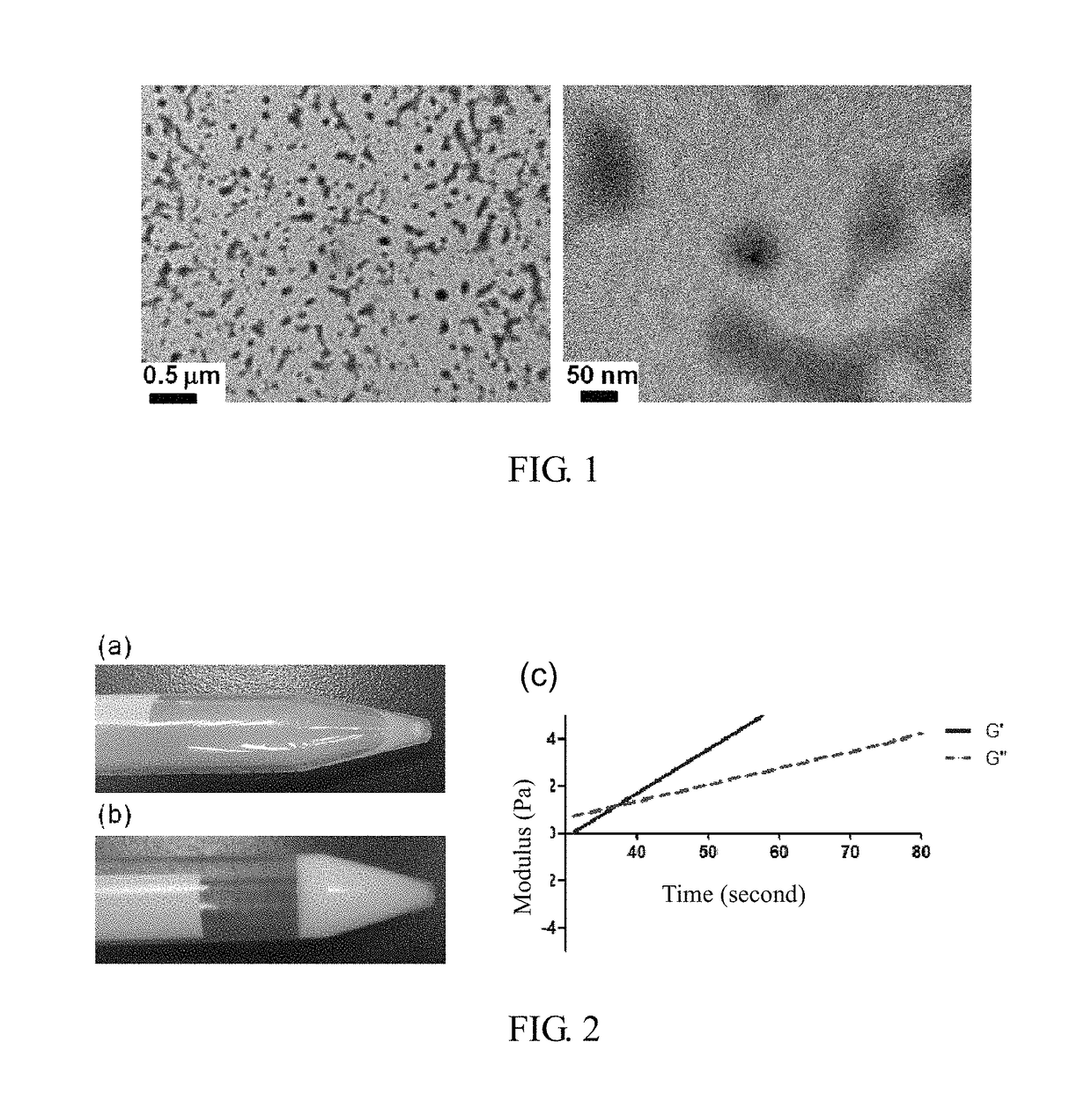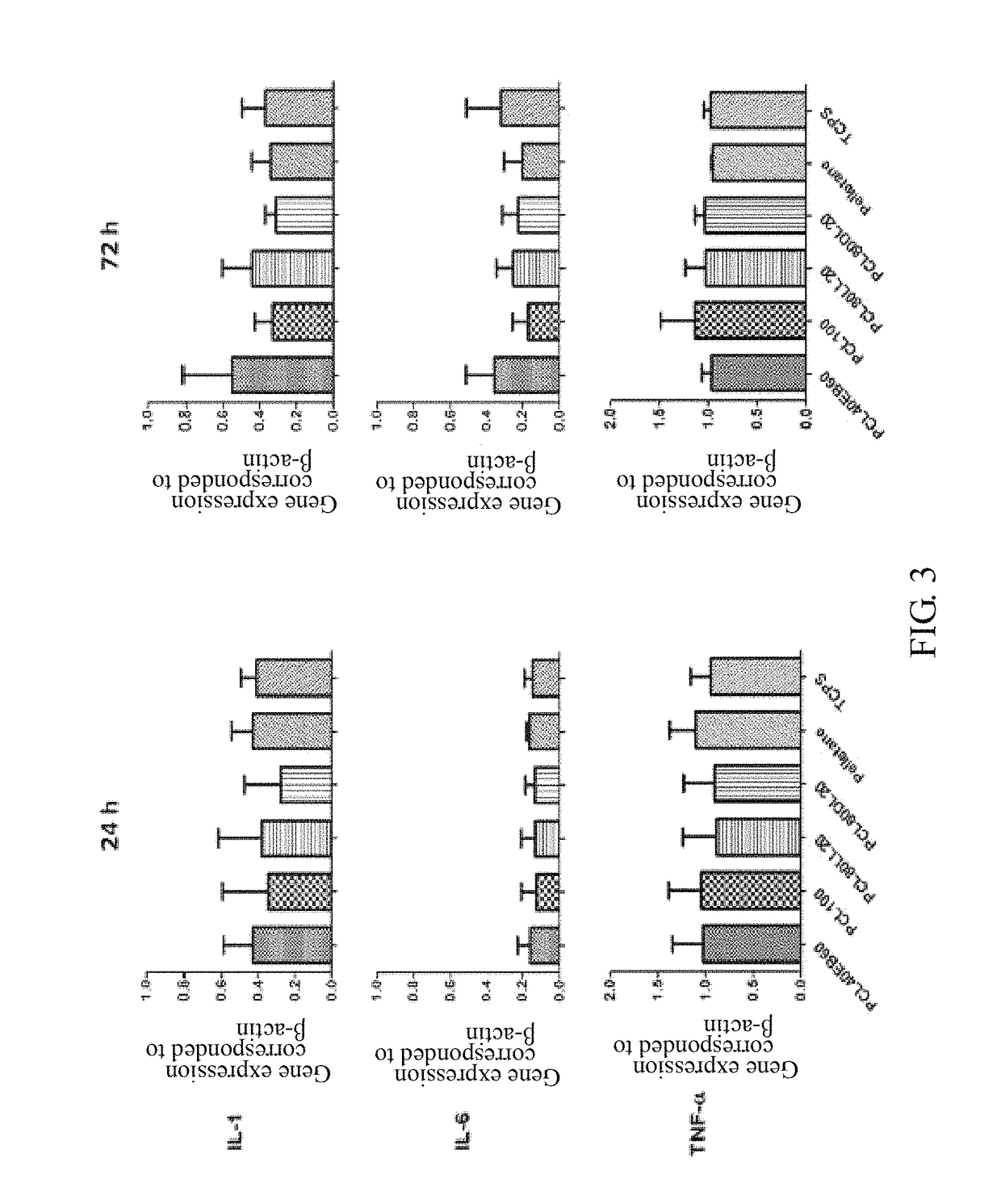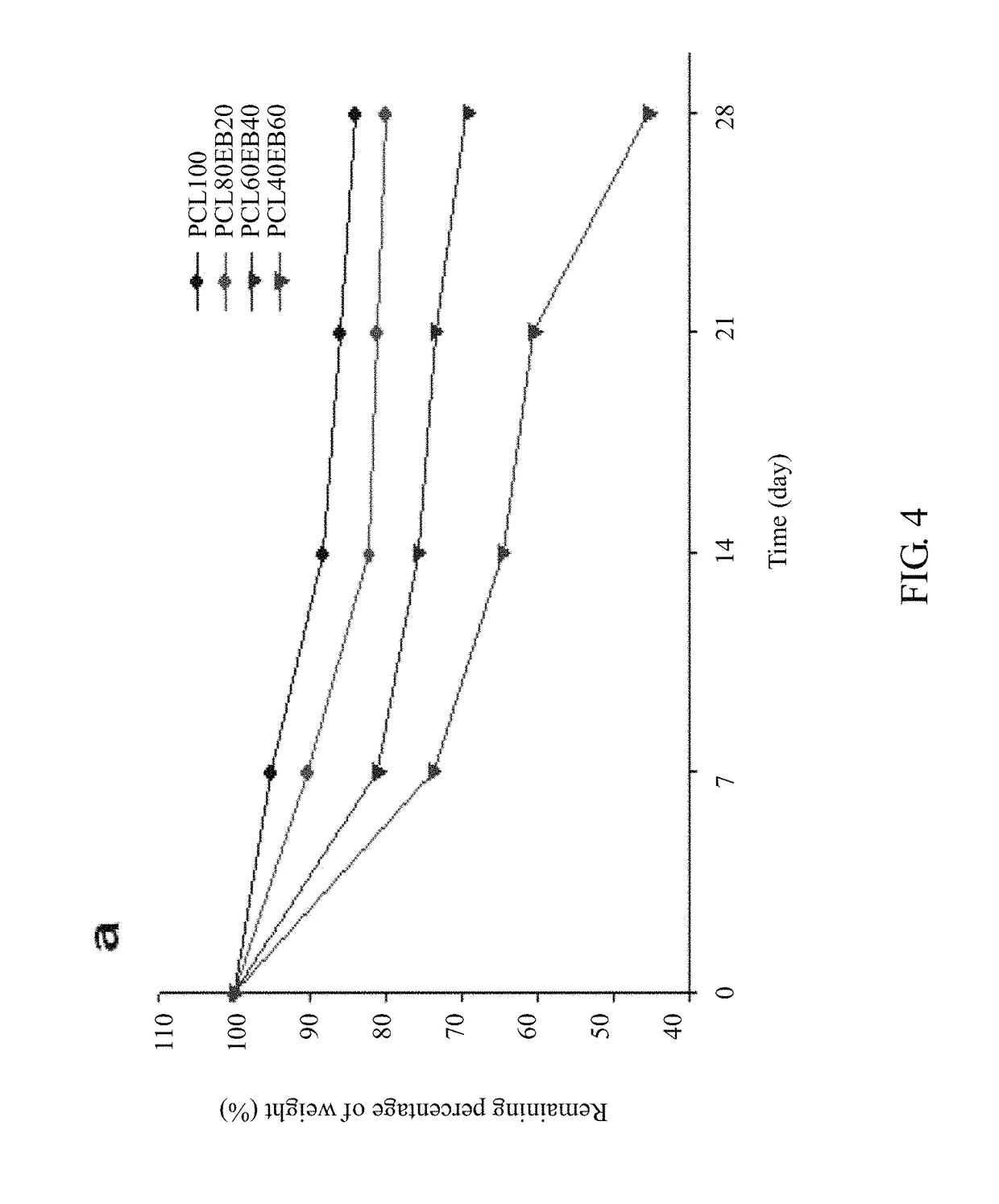Biocompatible and biodegradable elastomer
a biocompatible, biodegradable technology, applied in the direction of prosthesis, blood vessels, pharmaceutical delivery mechanisms, etc., can solve the problems of thrombosis, vascular tangles, and aneurysms, and the source of small vascular grafts is not yet satisfactory, and achieves good biocompatibility, good dispersion stability and blood compatibility, and significant blood coagulation function.
- Summary
- Abstract
- Description
- Claims
- Application Information
AI Technical Summary
Benefits of technology
Problems solved by technology
Method used
Image
Examples
example 1
Preparation of Degradable Elstomer
1-1 Formulation
[0047]The different soft segments were prepared by mixing three different degradable (water degradable) oligomer diols and polycaprolactone diol with several ratios so as to synthesize various degradable polyurethane in which the rate of degradation is controllable. The three different soft segments are shown in Table 1, where EB represents PEBA, LL represents PLLA and DL represents PDLLA. The soft segment with 20 wt % polylactic acid diol is shown in Table 2. Firstly, 4.4 wt % of 2,2-bis(hydroxymethyl)propionic acid (DMPA, Aldrich) was fixed. The molar ratio of isocyanate functional group and hydroxyl group of the prepolymer before water-dispersion was set at 1.9 (NCO / OH), while the molar ratio of isocyanate functional group and hydroxyl group plus amine group of the prepolymer after water-dispersion was set at 1.08 (NCO / (OH+NH2)). Additionally, 85 mol % of chain extender with solid content of 30 wt % was added. The ratio of IPDI:mar...
example 2
Biocompatibility Analysis of the Biodegradable Polyurethane
2-1 Inflammation Test of Macrophage
[0061]Murine macrophages (J774A.1) from 30 to 40 generations were used in the present embodiment. Oil-based polyurethane (Pellethane, control group) and the waterborne biodegradable polyurethane subjected to subjected to membrane formation and vacuumization were firstly sterilized using 75% ethanol, immersed in phosphate buffered saline (PBS) three times to replace the ethanol, and then place in 24-well corning. The medium used was high glucose Dulbecco's modified Eagle's cell medium (Gibco) containing 10% FBS, 1% PSA, and 1.5 g / L Na2CO3. Cells were incubated at the density of 2×104 cell / well at the condition of 37° C. and 5% CO2 for 24 hours and 72 hours. Cell morphology was observed using microscope and cell diameter was analyzed using Multisizer™ 3 COULTER COUNTER® (Multisizer 3, Beckman Coulter, USA).
[0062]As shown in Table 4, the inflammatory response of the waterborne biodegradable po...
example 3
Preparation of scaffold
3-1 Scaffold Preparation by Electrospinning
[0076]An electrospinning device was constructed by using high voltage power supplier (YSTC), syringe pump (KDS-100, KD Scientific, USC), and spinneret (20G, TERUMO). The waterborne biodegradable polyurethane subjected to membrane formation was dissolved in acetone (Tedia) to prepare 10 to 25 wt % solution and loaded into the syringe pump. The high voltage power supplier was attached with one end to the spinneret and the other to the collector. The flow speed of the syringe and the voltage were set at 10 to 17 μL / min and 7 to 9 kV, respectively. A layer of aluminum foil or glass plate could be placed on the collector to allow the operating distance between the tip of the spinneret and the collector to be 19 cm. The electrospinning nano / micro fiber could then be collected on the aluminum foil or glass plate and followed by vacuumization at 25° C. for 48 hours. On the other hand, poly(D,L-lactide) (molecular weight=12114...
PUM
| Property | Measurement | Unit |
|---|---|---|
| Young's modulus | aaaaa | aaaaa |
| Young's modulus | aaaaa | aaaaa |
| tensile strength | aaaaa | aaaaa |
Abstract
Description
Claims
Application Information
 Login to View More
Login to View More - R&D
- Intellectual Property
- Life Sciences
- Materials
- Tech Scout
- Unparalleled Data Quality
- Higher Quality Content
- 60% Fewer Hallucinations
Browse by: Latest US Patents, China's latest patents, Technical Efficacy Thesaurus, Application Domain, Technology Topic, Popular Technical Reports.
© 2025 PatSnap. All rights reserved.Legal|Privacy policy|Modern Slavery Act Transparency Statement|Sitemap|About US| Contact US: help@patsnap.com



